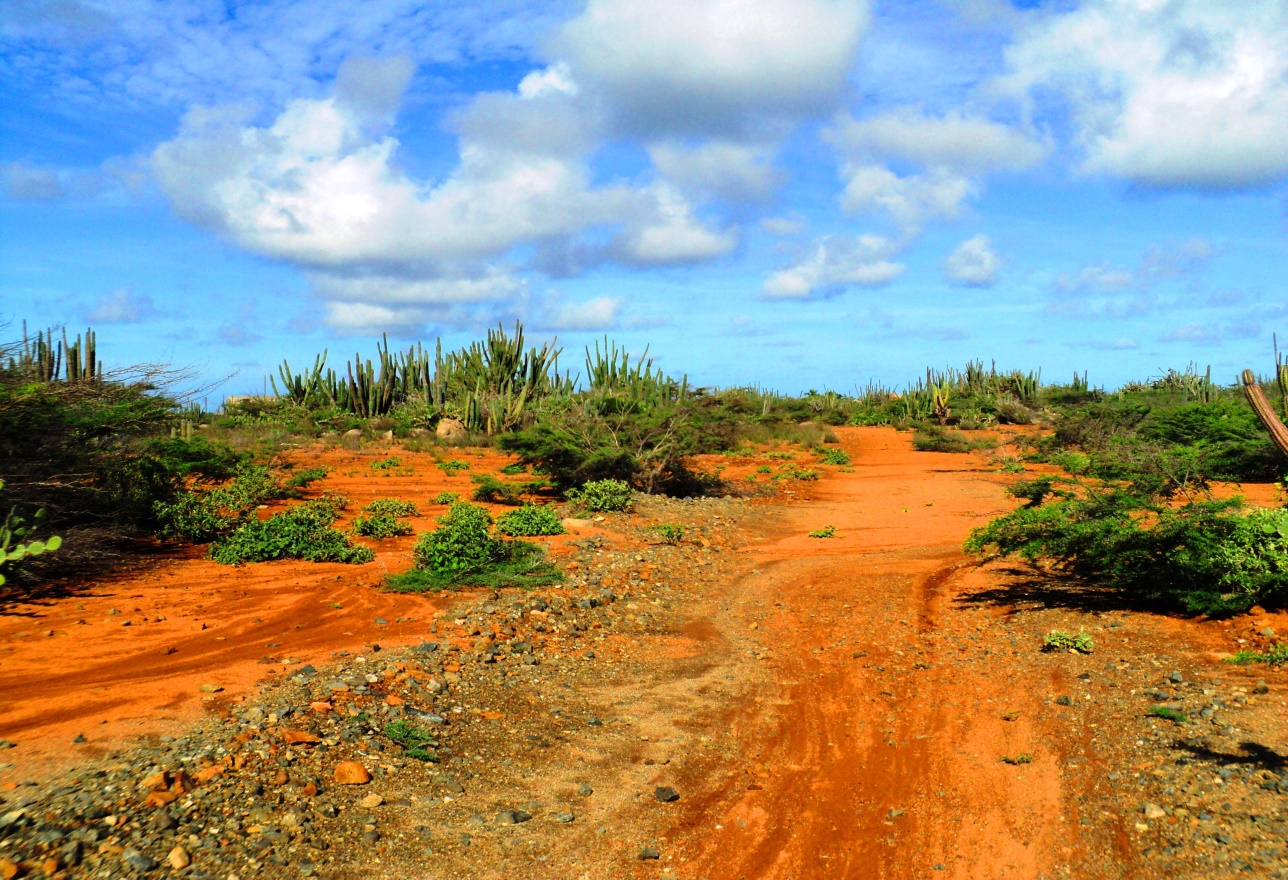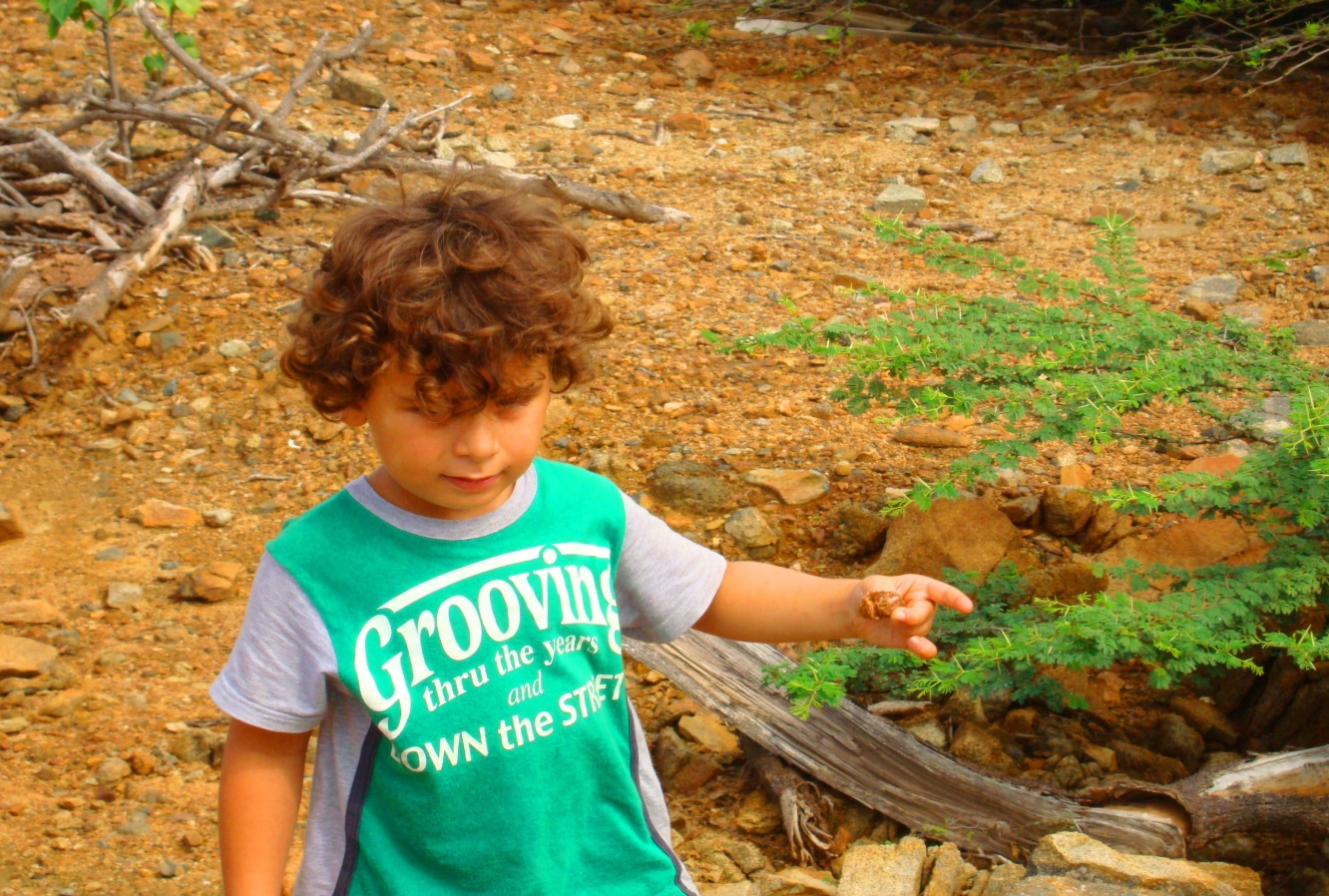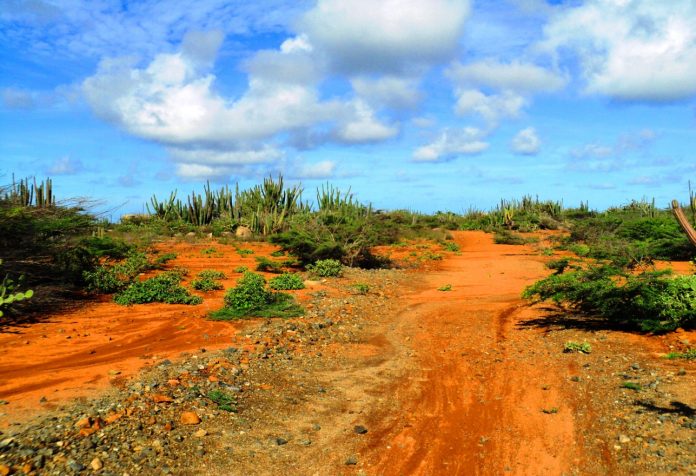Booking a magical glimpse inside Etnia Nativa
Article by Etnia Nativa call us 592 2702 and book your experience!
Each week, Etnia Nativa presents a new episode concerning cultural heritage, native knowledge, transcendental wisdom, and the importance of defending the true essence of our Aruba. We connect the reader with that mystical aspect of the island’s culture and traditions, encouraging everyone to ground and interact with our unique environment in a very special way. In this episode, we talk about Aruba’s “tera cora,” means “red soil” or “red earth.”
Among the different colors of the Aruban landscape, one of them attracts particular attention, namely the red clay earth that invades internal paths that zigzag inland on our island, destined for spiritual awakening and the path to one’s inner soul.

A natural pigment that is found where there is a relatively large amount of iron in the ground. The iron oxidizes and gives the soil its characteristic rust color. It’s all about the colors we consider ochre. Although we tend to think of a golden yellow when thinking of ochre, it all depends on other elements also present in the earth. So that the color can vary from yellow to reddish and brownish, with even some slightly bluish variants.

The word ochre is derived from the Greek ‘Ochros’, which means ‘yellowish’. Ochre has been used since ancient times all over the world for various purposes. It is a pigment that is exceedingly lightfast. Ocher is a clay-rich pigment that contains significant amounts of iron oxide and is the first known pigment applied by ancient cultures. It is a very common find at archaeological sites. The first possible use of ocher was discovered at a Homo erectus site about 285,000 years ago.
Aruban’s native people’s association with the colors and tones of ocher is also inherited from the island’s first inhabitants.
Etnia Nativa’s intent to solve the ochre’s mystery starts during a trek through the arid soil of Aruba, as mentioned in our episode CIV-104 of “Island Insight,” explaining how diverse shades of ochre color can be seen in prehistoric cave paintings, on pottery decoration as geometric ceramic designs, in lime stone caves, granite boulder surfaces, as well as rock art situated at different points of our island (see our episode XIV–14).
Ochre was a highly valued and sought-after commodity among the indigenous people of our island. Finding the best red ochre was also cloaked in mysticism through wonderful and almost mystical walking inland. Only one man had access to the ochre sites. Situation that was common among all the aboriginal tribes of the American continent. A curiosity is that the name’redskins’ is also related to ocher. Like many other ancient peoples, these Native Americans also rubbed their skin with red ocher, just as others did with Annatto (Bixa Orellana L.; see our episode 233).
As one of our objectives is to keep ancestral techniques alive, Etnia Nativa teaches how and where to find the best ochre color and also how to work the raw clay, from digging it up—as our ancestors did—to enjoying molding a unique and exquisite piece of locally collected clay and the best ocher pigment of Aruba.
The traditional craftsmanship that we practice and teach is the most tangible manifestation of Aruba’s intangible cultural heritage, through which the mysterious red color of our soil is resolved in an existential tree-dimensional form! As an entity dedicated to conserving and promoting our native heritage, the goal of keeping ancient native methods alive and incorporating cultural philosophies intact has a cultural responsibility of its own.
Aruba’s ocher soils are poor in organic matter due to scarce vegetation and constant wind erosion, but rich in ancestral stories as they are legendary soils.
So if you are interested in really getting to know all about your travel destination: the flora, fauna, geology, history, and autochthonous art, as well as the true identity of the island, book a visit to Etnia Nativa, a unique native gem! Let Anthony, our newspaper’s acclaimed cultural columnist, guide and lecture you regarding the most interesting and revealing stories about Aruba’s undiscovered native ethnicity, an adventure beyond beaches and tourist traps. Visit his magnificent dwelling that integrates natural and reused materials, bursting with culture and island heritage, and you’ll love our island beyond beaches!
Appointments and confirmations trough WhatsApp +297 592 2702 or etnianativa03@gmail.com




















